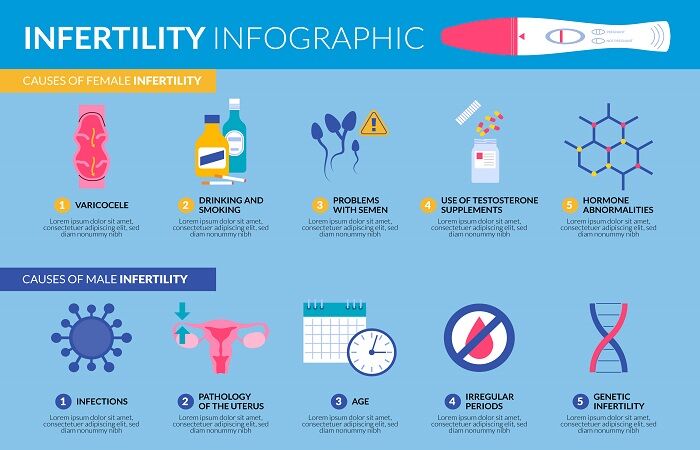Table of Contents
Introduction
Over the last few decades, one trend has become clear across continents, cultures, and economies: human fertility is declining. This isn’t just about fewer babies being born; it’s a deep-rooted transformation shaped by biological, societal, environmental, and technological factors. From Tokyo to Toronto, fertility rates are dropping below replacement levels, and India is now part of this global shift.
This blog explores why human fertility is declining worldwide, what unique factors are at play in India, and how these changes impact individuals, families, and healthcare systems like never before.
1. Understanding Fertility: The Basics
Fertility refers to the ability to conceive and have children. It is usually measured by the Total Fertility Rate (TFR), which indicates the average number of children a woman is expected to have during her lifetime.
-
- A TFR of 2.1 is considered the replacement level, meaning a population can replace itself without growing or shrinking.
-
- As of 2024, more than half of the world’s countries have a TFR below this level.

2. The Global Fertility Decline: Causes and Patterns
While the pace and reasons vary, some common drivers of global fertility decline include:
a) Urbanisation and Industrialisation
-
- As societies industrialise, children are no longer economic contributors but become dependents.
-
- Urban families often prioritise careers, education, and living standards over large families.
b) Education and Employment of Women
-
- Increased access to education and careers for women delays marriage and childbearing.
-
- Family planning becomes a priority, and many opt for smaller families.
c) Widespread Use of Contraceptives
-
- Global access to contraception has empowered couples to plan and delay pregnancies.
d) Lifestyle and Environmental Factors
-
- Sedentary lifestyles, poor diets, stress, and exposure to environmental toxins have negatively impacted reproductive health in both men and women.
e) Delayed Marriages and Parenthood
-
- In many countries, people are marrying and starting families later in life.
- Biological fertility declines with age, especially for women after 35.

3. India: A Country in Transition
India, once synonymous with a high birth rate, is now experiencing a demographic transformation. According to the National Family Health Survey (NFHS-5, 2019-21):
-
- India’s national TFR has dropped to 2.0, below replacement level for the first time.
-
- Urban India has a TFR of 1.6, while rural India stands at 2.1.
What this means:
-
- India is in the early stages of what demographers call a “fertility transition.”
-
- States like Kerala, Tamil Nadu, and West Bengal have TFRs far below 2.1.
4. Unique Indian Factors Driving Fertility Decline
a) Female Education and Workforce Participation
-
- More women are completing higher education and entering the workforce, leading to delayed marriage and childbirth.
b) Urban Aspirations and Economic Pressures
-
- Urban middle-class families face pressure to provide quality education, healthcare, and housing, making large families less viable.
c) Shift in Family Structures
-
- Joint families are giving way to nuclear units, where raising children requires more hands-on time and resources from parents.
d) Delayed Marriages
-
- Rising average marriage ages in metropolitan areas directly correlate with declining fertility.
e) Rising Infertility Rates
-
- Infertility is increasing in India, affecting 10-15% of married couples. In certain pockets of society like IT professionals, it has gone up to 20-25%. Contributing factors include PCOS, obesity, stress, environmental toxins, and sedentary lifestyle.
5. The Role of Men in Fertility Decline
Often overlooked, male fertility is a crucial piece of the puzzle:
-
- Studies show a global decline in sperm counts over the last 40 years.
-
- In India, male infertility is increasingly being diagnosed but remains socially under-discussed.
-
- Lifestyle factors such as smoking, alcohol use, stress, obesity, diabetes, physical inactivity, pollution, and prolonged screen time all contribute.
6. Environmental and Lifestyle Influences in the Indian Context
India’s rapid urbanisation and pollution levels contribute heavily:
-
- Air pollution affects hormonal balance and reproductive organs.
-
- Plastics and pesticides in water and food act as endocrine disruptors.
-
- Work-life imbalance and lack of physical activity affect both hormonal and psychological well-being.
This makes fertility not just a personal issue, but a public health concern.
7. Consequences of Declining Fertility
a) Ageing Population
-
- A lower birth rate leads to a higher proportion of elderly people.
-
- India will face the challenge of supporting an ageing population while its workforce shrinks.
b) Shrinking Workforce
-
- Economic growth depends on a steady labour force. Fewer young people may hinder India’s demographic dividend.
c) Strain on Social Systems
-
- More elderly dependents means greater pressure on healthcare and pension systems.
d) Rise of Fertility Clinics and ART (Assisted Reproductive Technology)
-
- The demand for IVF, IUI, and fertility treatments is rising.
-
- Clinics like Kamna Fertility are becoming essential healthcare providers for the new-age couple.
8. What Can Be Done? Solutions and Recommendations
a) Fertility Awareness Education
-
- Schools, colleges, and workplaces should include fertility literacy as part of health education.
b) Encouraging Work-Life Balance
-
- Workplaces can support parenting goals through flexible policies.
c) Public Health Focus on Reproductive Health
-
- Investment in reproductive health, access to diagnosis, and early intervention can reduce infertility.
d) Environmental Regulations
-
- Stronger environmental policies to reduce pollution and endocrine disruptors can improve public reproductive health.
e) Breaking Social Taboos
-
- Open conversations around male and female infertility reduce stigma and promote early treatment.
9. A Note for the Future: Conscious Family Planning, Not Just Population Control
For decades, the emphasis in India was on population control. Now, the conversation must shift:
-
- From quantity to quality of life
-
- From fear of overpopulation to maintaining demographic balance
-
- From stigmatising infertility to supporting fertility with science, empathy, and awareness
Conclusion
The global fertility decline is not a momentary phase — it’s a structural shift. In India, this means moving from a historically high-fertility society to one facing unique demographic, environmental, and lifestyle challenges. Understanding why fertility is declining helps us make informed decisions, both personally and as a society.
Whether it’s planning a family, designing public policy, or creating awareness, the time to act is now. Fertility isn’t just about biology — it’s about the future of a nation.
Clinics like Kamna Fertility, rooted in compassion and personalised care, have a critical role to play in this journey: not just treating infertility, but educating, guiding, and supporting a healthier, more informed generation.



